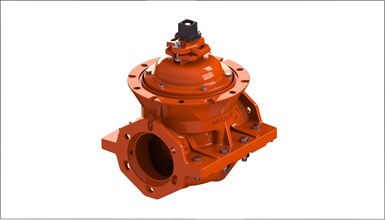Mueller Introduces the New PermaSeal Insertion Valve
The valve is a true resilient wedge gate valve that embraces applicable requirements of the AWWA industry standard and is compatible with most major pipe types.
#VMAnews #water-wastewater
Contributed by Margo Ellis

Part of the 2300 series gate valve product line from Mueller, the new product is developed with “clean seat” technology and offers reliable and repeatable watertight shutoff suitable for utilities’ exercise programs.
Standard and oversized variants are now available in 4, 6, 8, 10, and 12 inches, and can be inserted into an existing water main with minimal service disruption. Mueller also offers a line of PermaSeal Insertion Valve installation equipment that has been designed to ease common installation difficulties and comes as two independent sets intended to service individual size ranges of 4-8 inches and 10-12 inches.
“Mueller continues introducing new, innovative products to help our customers realize efficiencies and lower costs,” said Adam Donnelly, VP and general manager of the Iron Gate Valves at Mueller. “Combining our ductile iron tapping sleeve with our industry-leading resilient wedge gate valve, the PermaSeal Insertion Valve provides the ability to install a highly reliable, in-line valve without shutting off water service, lowering or eliminating water disruptions while saving on installation time and cost compared to other methods.”
For more information about the insertion valve, visit MuellerCompany.com.
RELATED CONTENT
-
Dealing with Sand Erosion in Control and Choke Valves
Sand erosion in control and choke valves is a significant consideration offshore.
-
Proper Care of Knife Gate and Slurry Valves
How to resolve—and avoid—field failures of knife gate and slurry valves
-
The Role of Valves in HAZOP Studies
Process hazard analysis (PHA) is required by U.S.











 Unloading large gate valve.jpg;maxWidth=214)